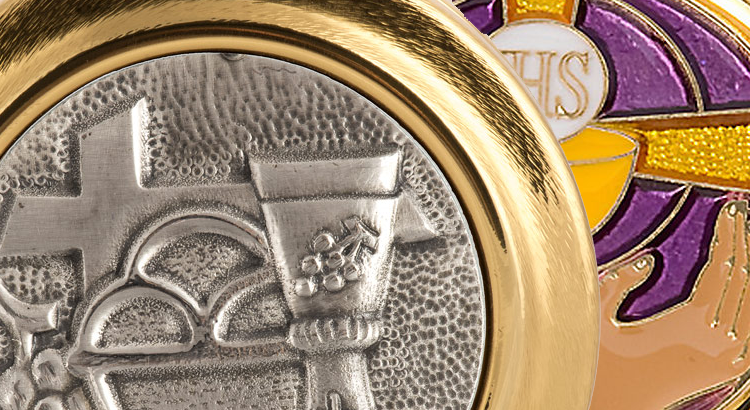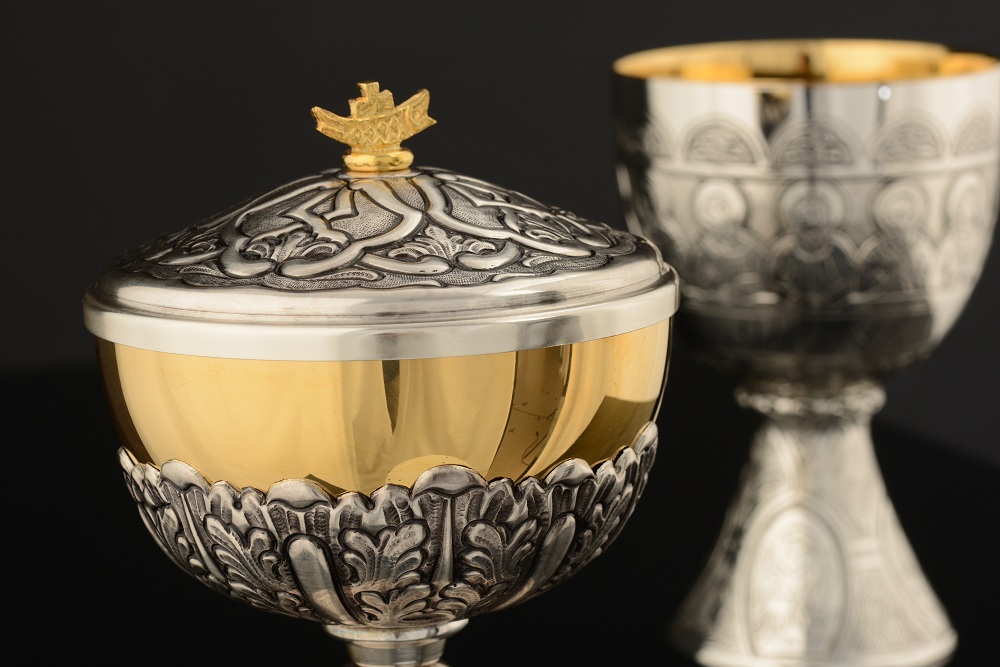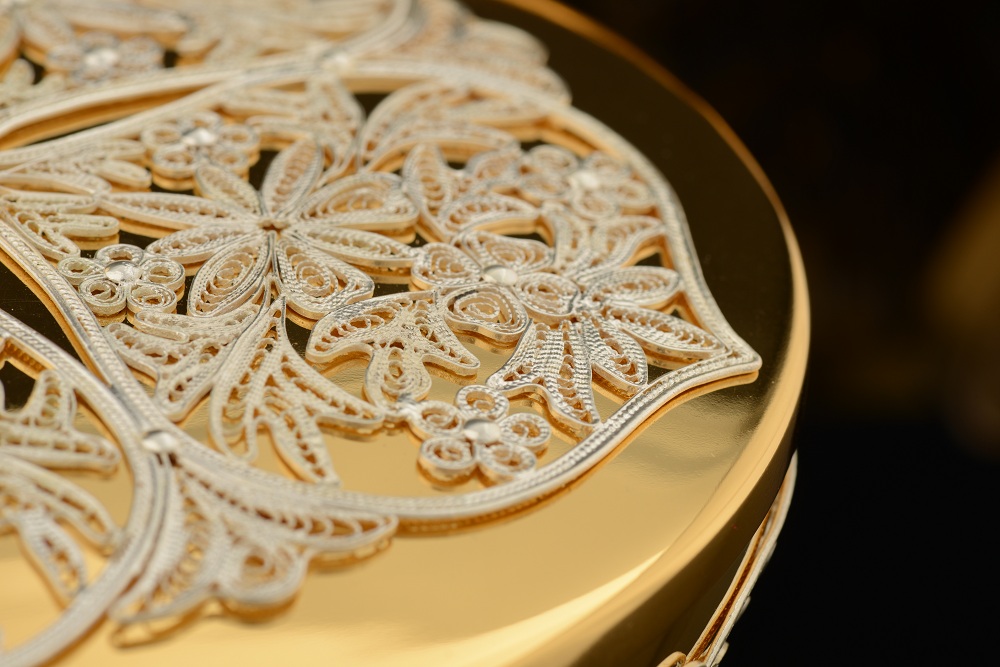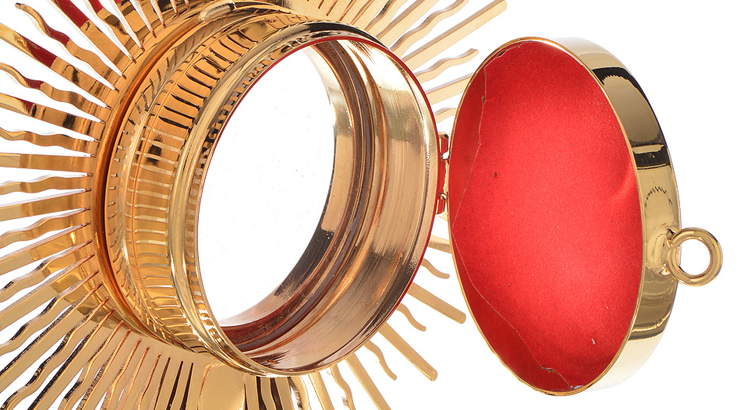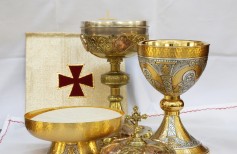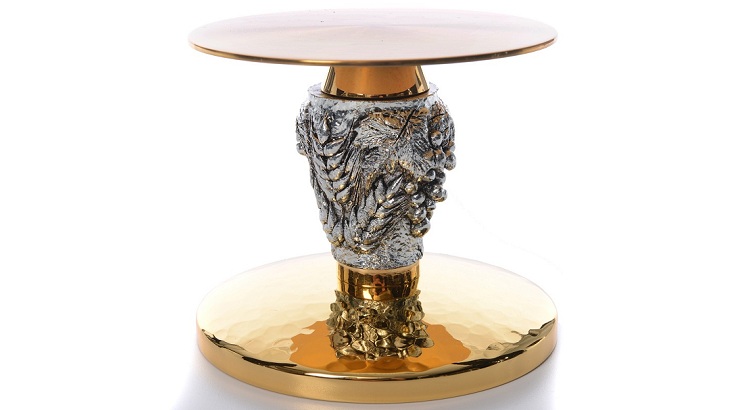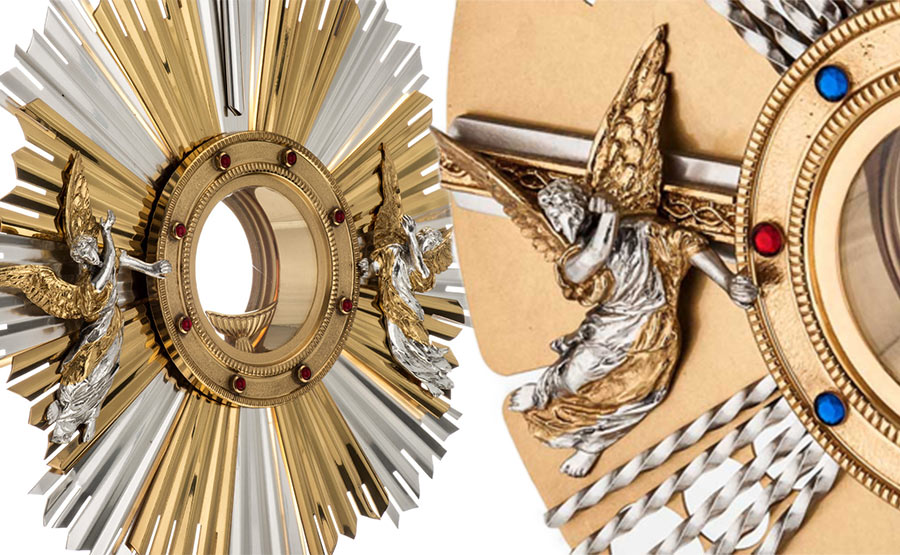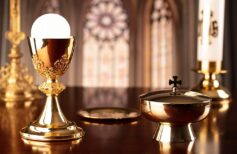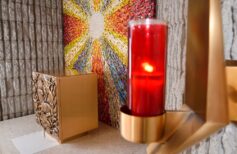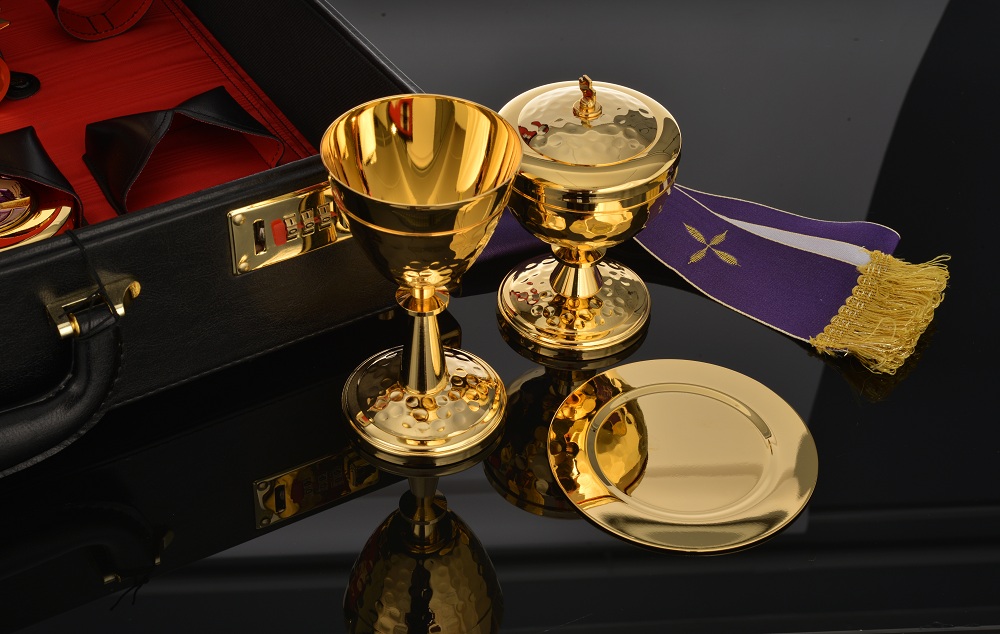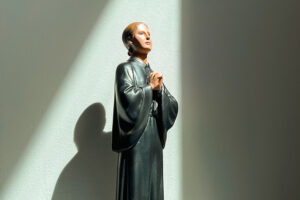Metal pyxes are containers designed to enclose the consecrated hosts.
The Eucharistic pyxes are usually made of enamel plate, pewter, silver plate, gold-plated brass, aluminum, but can also have inserts of other metals, or glass, or even be in olive wood.
They are small size containers, sometimes contained in turn in suitable bags or matching burses. In most cases and in many aspects, metal pyxes can be assimilated to monstrances, although do not allow what is the main purpose of the monstrance, that is to expose the Blessed Sacrament.
They are very practical and functional to transport the consecrated hosts. The solemn nature of the metal pyxes is emphasized by the decorations with which they are often ornate: sacred images, depictions of Christ on the Cross, or as the Good Shepherd, the Evangelists, Fish, Lamb, olive tree, the symbol JHS.
Often metal pyxes are finely chiseled, knurled or even enameled in bright colors. They can be decorated with bas-reliefs depicting sacred symbols, or even portraits of Christ, the Pope, and so on.
In other cases, metal pyxes are equipped with a pivot that allows you to place them on a basis, to transform them into real monstrances, ready for the exposition and the blessing of the Blessed Sacrament. Alternatively, can be placed on a base for monstrance to achieve the same effect.
The display cases can have a ring to be comfortably worn around the neck. Metal pyxes can be made of gold casting, silver or mixed and decorated with ornamental stones. There are also display cases-monstrance which are a hybrid between the two church goods.

